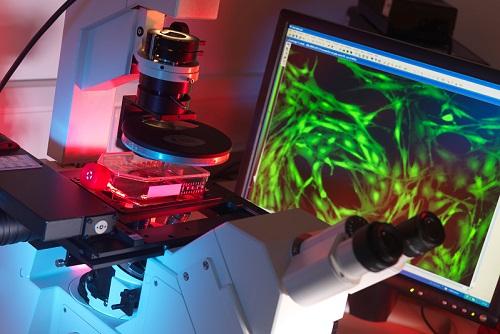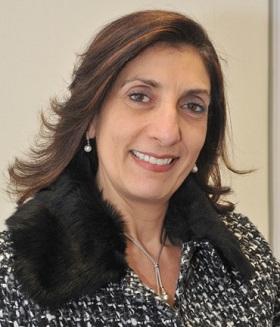Using AI to control energy for indoor agriculture
30 September 2024
Published online 13 November 2013

There are few medical fields as fast-moving and expansive as cell therapy and regenerative medicine in the Middle East. If progress continues at its current pace, the Middle East and North Africa could become one of the world's centres for biomedical research.
Unfettered by religious stigma or protest – being pre-approved by almost all Islamic jurors – stem cell clinical trials are increasing, while funding initiatives and construction of new research facilities abound. However, despite promising signs, several barriers risk thwarting the field's potential.
Between a lack of coordinated state policies and false marketing by commercial interests, the adoption of cell therapy and research-based investment models might be hampered.
Stem cells are among the body's building blocks, and while the public does not always distinguish between them – tending to classify everything under the rubric of "stem cells" – there are multiple types being investigated in the search for potential therapies – mainly through the regeneration and repair of damaged or diseased cells.
Essentially, adult stem cells are tissue-specific cells whose function is to replace lost or damaged cells, but they have limited potential for self-renewal. Fetal stem cells and cord blood cells act in a similar manner.

Embryonic stem cells (ESCs) are the original cells from which all the 220 different types of cells that comprise the human body develop. Induced pluripotent stem (IPS) cells have the capacity to transform into any cell through engineering.
There are few stem cell therapies as widely accepted by the medical community as those that use tissue-specific stem cells, such as haematopoietic stem cell transplantation (HSCT) to treat patients with blood-related malignancies as well as non-malignant conditions such as aplastic anaemia, thalassaemia and sickle cell anaemia.
Over the past decade, the MENA region has seen a significant increase in HSCT clinical work and research, including programs in Lebanon, Egypt, Algeria, Morocco, Saudi Arabia, Tunisia, and Syria. This activity has been complemented by the establishment, in 2008, of the Eastern Mediterranean blood and marrow transplantation (EMBMT) group, a cooperative platform for physicians, scientists and healthcare workers.
The use of stem cells to treat other conditions, such as autoimmune, degenerative or congenital diseases, is being evaluated experimentally and in clinical trials — the same type of stem cell clinical trials that have proliferated in the region with 32 registered "open" clinical trials taking place in September 2013. Some bone, skin and corneal diseases or injuries can be treated by the grafting of tissue that depends on stem cells from these organs. This is part of a trend where several countries in the Greater Middle East (GME) are now actively trying to establish a presence in this field through new funding and research facilities.
Despite the flurry of activity and interest, there are factors hindering the expansion and translation of lab bench knowledge into treatments.
While some high-income Arab countries specifically invest in research and development, the majority of researchers1 in the MENA region have to scramble for funds. According to estimates from the UNESCO Institute for Statistics, science spending has been consistently low in the majority of Arab countries for more than four decades. R&D spending varies from 0.1 to 1.0% of GDP - compared with 2.5% in more developed countries.
There are some positive changes, especially in the Gulf region. Sheikh Hamdan bin Rashid, the United Arab Emirates minister for finance and industry, has set up a Dh20 million (US$5.4m) institution focusing on genetics and stem cell research. The Qatar Foundation will have a stem cell laboratory in the US$3 billion Sidra Medical Centre, set to open in 2014, and will include a genetics and stem cell unit. Saudi Arabia established the Stem Cell Therapy Program at King Faisal Specialist Hospital and Research Center in Riyadh that collaborates with institutions such as Harvard Medical School. Nevertheless, most MENA countries have no established granting agencies whose mission is to support research.

National stem cell research policies heavily affect the productivity of stem cell researchers1. Countries have vastly disparate polices governing stem cell research, leading to inconsistent standards that may prevent international collaborations. To streamline research, the International Society for Stem Cell Research (ISSCR) developed guidelines to ensure rigorous ethical standards and to encourage global uniform research practices.
Almost all Islamic jurors permit human ESC research, but agree that creating embryos for the sole purpose of research should be prohibited2. With this common denominator, strong leadership is needed to standardize policies across the region.
Biomedical research in general, and stem cell research in particular, suffer from a lack of inter-institutional or regional collaboration. Most research activities are generated by scientists trained in the US or Europe continuing work they started abroad. Collaborative research is almost exclusively limited to the institution in which the scientist originally trained. However, recent regional funding initiatives such as the Qatar National Research Fund (QNRF) are facilitating regional collaboration through a mandatory partnership with a Qatari institution.
Most research activities are based on received wisdom and few regional universities generate new biomedical knowledge.
This has created apathy in the biomedical community in the region and does not promote public awareness about the added value of research.
For the general public, funding research is often viewed as a waste of money and research participants are often perceived as "guinea pigs". Frequently, patients and their families will refuse to participate in an Institutional Review Board-approved research study on the use of stem cells for regenerative medicine, while willing to pay to receive the same treatment in commercial centres that propose unsanctioned use of stem cell therapy.
Several institutions in the MENA region have a shortage of native research resources. Some countries have few nationals trained in research while others, like Lebanon and Egypt, suffer from brain drain – with the best qualified personnel heading to North America or Europe.
The leadership at the American University of Beirut Medical Center (AUBMC) is working towards repatriation of doctors and scientists and establishing a robust program of collaboration in education, research and clinical study with health institutions and medical schools across the region. A major investment in building, expanding, and upgrading of local infrastructures and creating regional collaborations is needed for research capacity building.
Over the past few years, there has been a steep rise in the MENA region of pseudo-scientific and illegitimate centres that claim to offer stem cell-based treatments for multiple diseases ranging from congenital deformities to Down Syndrome, or to offer cosmetic enhancements. Scientists are concerned that some clinics may be offering these treatments without regulation or other standard patient protections. These centres feed on the ignorance and desperation of patients.
Despite the obstacles, the growing regional collaborations between high-income countries in the Gulf region and other Arab states with well-trained researchers are a positive development. Public policies have a vital role to play, and should limit the development of commercial entities dealing with stem cells in favor of academic institutions with regulatory infrastructures.
Samia Khoury is the associate dean for clinical and translational research at the American University of Beirut. She is also the director of the Abu Haidar Neuroscience Institute, and director of the new AUBMC Multiple Sclerosis (MS) Center at AUBMC in Beirut. She is a professor of neurology at the American University of Beirut and visiting professor of neurology at Harvard Medical School.
Ali Bazarbachi is a professor of medicine (Hematology and Oncology), professor of anatomy, cell biology and physiological sciences, associate dean for basic research, and director of the Bone Marrow Transplantation programme at the American University of Beirut Medical Center.
doi:10.1038/nmiddleeast.2013.214
Stay connected: